This post may contain affiliate links. By clicking and making a purchase through the links, I earn a small commission at no extra cost to you. See my disclaimer for more information. This and display ads allow me to keep the site up to date and give back.
If you are passing through the Mexican capital, you will ideally have at least 3-4 days available to explore its various barrios, museums, and historical sites. However, if you are extremely pushed on time and only have one day in Mexico City, you can see many of its key highlights in just 24 hours.
This one-day itinerary has been written by a local resident and is perfect for those who are just passing through or can only visit CDMX on an extended layover.
While it definitely deserves more attention, Mexico City in one day is possible, and this itinerary gives you a nice taste of what it has to offer. And if you enjoy it, you can always come back to explore in more depth later.
💲 Save time and money with this Mexico City Pass – includes tickets to the National Museum of Anthropology, Frida Kahlo Museum, Chapultepec Castle, and more.
How to see in Mexico City in One Day
Wake up bright and early ready to grab a filling breakfast and make the most of your day in Mexico City. One of the most underrated highlights of visiting CDMX is its different neighborhoods, which are each like unique villages in themselves, and each has its own distinct charm and personality.
Breakfast in Polanco
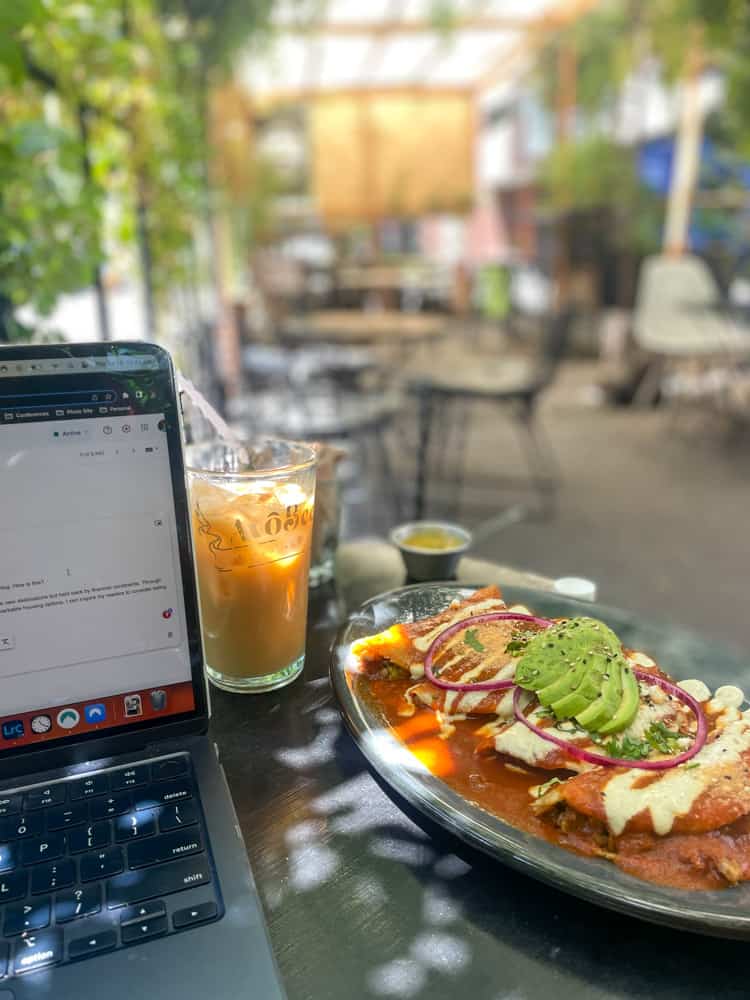
Chic Polanco is essentially Mexico City’s answer to Beverly Hills. The leafy cobbled streets of this upscale district attract a beautiful, well-heeled crowd and are lined with designer stores and picturesque coffee places.
Yet despite the district’s elegance, Polanco manages not to be pretentious. There are some great coffee and brunch spots here where patrons sit on European-style tables out on the sidewalk.
Maison Belén (Av. Emilio Castelar, Polanco, Polanco IV Secc, Miguel Hidalgo) is a lovely French-inspired bistro that serves a selection of European and international breakfast options – from eggs benedict and avocado toast to Mexican chilaquiles rojos (deep-fried tortillas topped with spicy tomato salsa, sour cream, and eggs).
Better yet is Cafe Toscano (Temístocles 26), an Italian coffee shop whose interiors resemble an old-fashioned library with walls lined with books, antique furnishings, and artwork. The vegan chilaquiles are a must here, as are the pan dulces (Mexican sweet breads) and the fresh pressed juices and smoothies.
Visit the National Museum of Anthropology
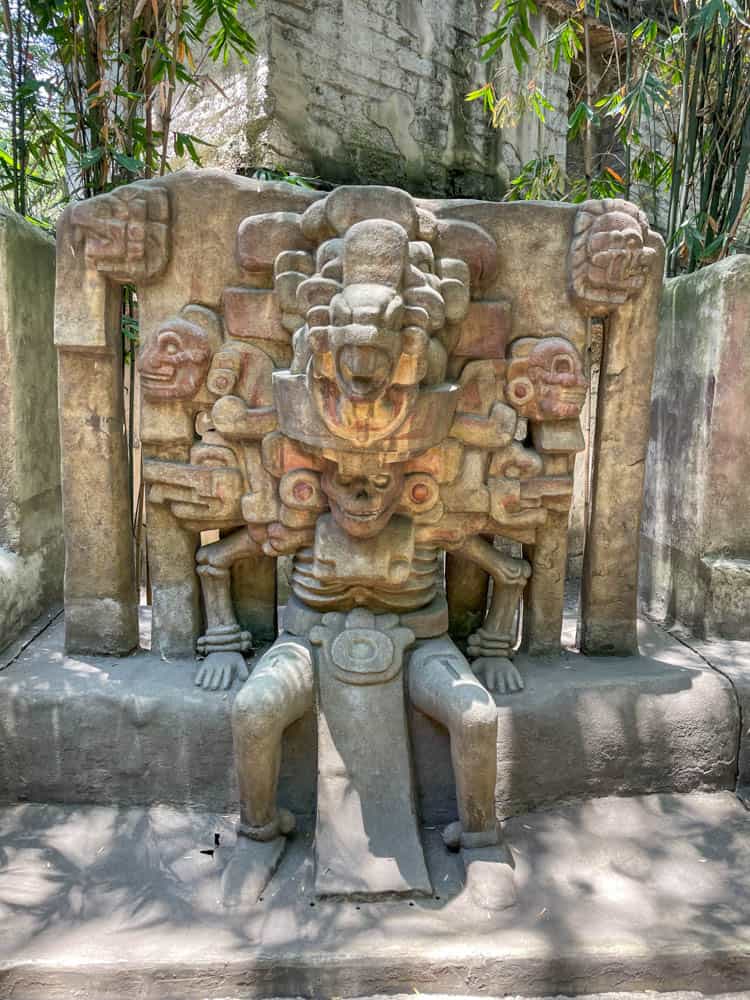
When you are sufficiently stuffed from breakfast, take a leisurely stroll from Polanco to the National Anthropology Museum. This sprawling cultural centre is the most visited museum in Mexico and is a must-visit even if you don’t consider yourself as being a “museum person”.
The exhibition halls here contain thousands of ancient artifacts that have been recovered from archaeological sites across the country.
They tell you the chronological history of Mexico and the numerous ancient civilizations that have inhabited it through the millennia, such as the Mayans, the Olmecs, and the Aztecs.
Some of the most notable items on display here include giant stone heads carved by the Olmecs that were recovered from the jungles of Tabasco, precious jewels retrieved from the cenote at Chichen Itza, sculptures from the Uxmal ruins and the Aztec sunstone from Tenochtitlan.
Honestly, the museum is so vast that you could easily spend 3-4 hours inside. In addition to the historical artifacts on display, there is an indigenous exhibit that aims to educate visitors on the customs, gastronomy, and culture of the 68 indigenous groups that live in Mexico today.
🇲🇽 Delve deeper into Mexico’s history on this highly-rated tour of the National Museum of Anthropology
Stroll through the Bosque de Chapultepec
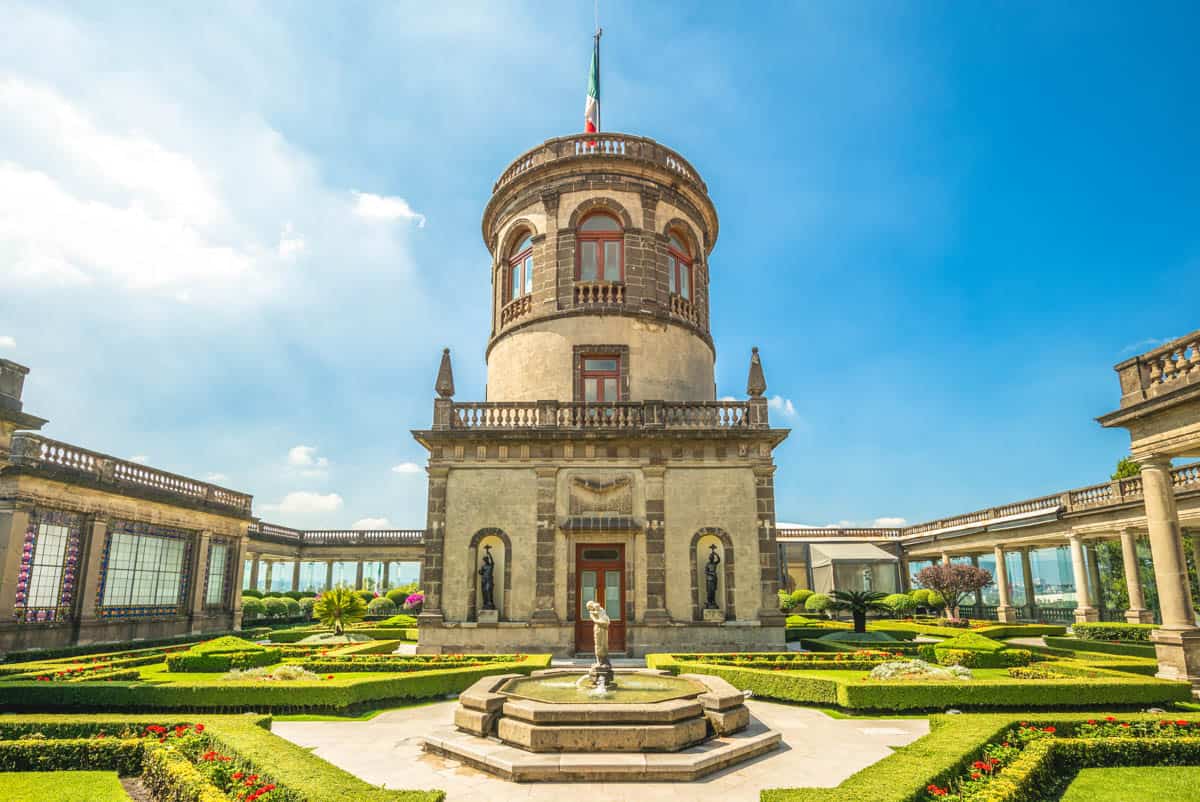
The National Anthropology Museum is perched on the edge of Mexico City’s Chapultepec Park and makes a great jump-off point for exploring the park itself.
This gorgeous green expanse in the center of the concrete jungle is the largest park in Latin America and is more than twice the size of New York’s Central Park.
You could easily spend one day in Mexico City getting lost among its trails, green spaces, and woodlands, but with limited time, make a beeline towards the Chapultepec castle. The castle is one of the only castles that exists in North America and is famous for being the only one that was once inhabited by European royalty.
Emperor Maximilian I of Mexico and his consort Empress Carlota lived here during the 19th century. Today, you can tour the castle, which has been preserved as a “living museum,” and admire its opulent rooms with its grandiose chandeliers, wall paintings, and sweeping vistas of the city.
If you are lucky, you may be fortunate enough to catch the “Danza de los Voladores” perform in Chapultepec. The dance is actually recognized by UNESCO as an “intangible cultural heritage” and involves a group of five men who dance around a 30m pole before four of them ascend to the top and slowly cascade down on ropes.
It is a very special thing to witness, and sometimes you will see little stalls and tianguis in the park where people are selling little model versions of the dancers which make great souvenirs from your Mexico trip.
🕕 Short on time? This tour takes you to the Museum of Anthropology and Chapultepec Park with a knowledgeable guide.
Visit the Frida Kahlo House Museum
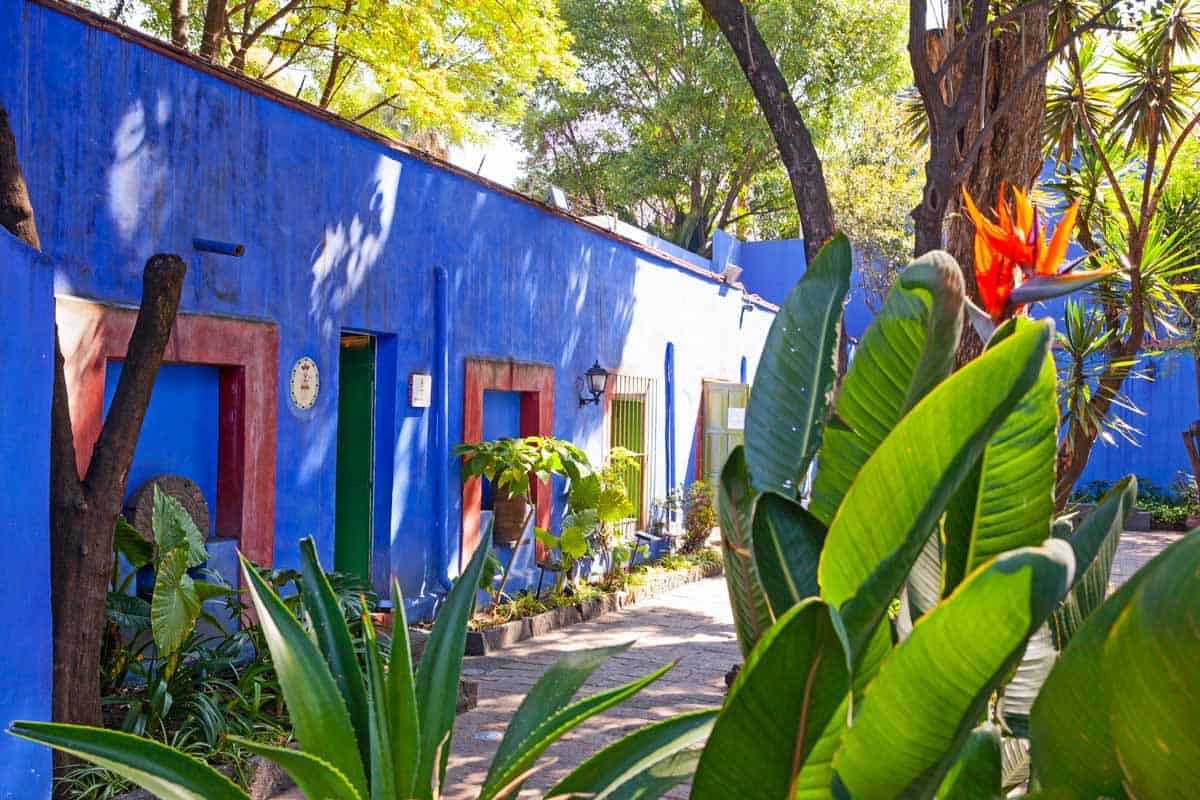
From Chapultepec, take an Uber or ride the metro to Coyoacán to visit Casa Azul – the home of the iconic late Mexican artist Frida Kahlo.
Kahlo and her monobrowed image have become something of a symbol of Mexico, and her house is an interesting place to visit, regardless of your level of interest in Mexican artists.
The house has been preserved exactly the way that it was when Frida lived here, and its rooms display some of her most famous pieces of art. Kahlo was born and died in this house, and for a period, she shared it with her husband and fellow Mexican artist Diego Rivera.
It is important to note that you must purchase tickets for the house online in advance. You are required to reserve a specific time slot and then arrive at the house 15 minutes before.
Since this is one of the most popular tourist attractions in Mexico City, tickets often sell out several days in advance. If you simply show up and hope to buy tickets at the door, you will be disappointed and most likely turned away. You can buy tickets online here.
🎫 Avoid disappointment and get skip-the-line tickets to the Frida Kahlo Museum here
Spend an Afternoon in leafy Coyoacan
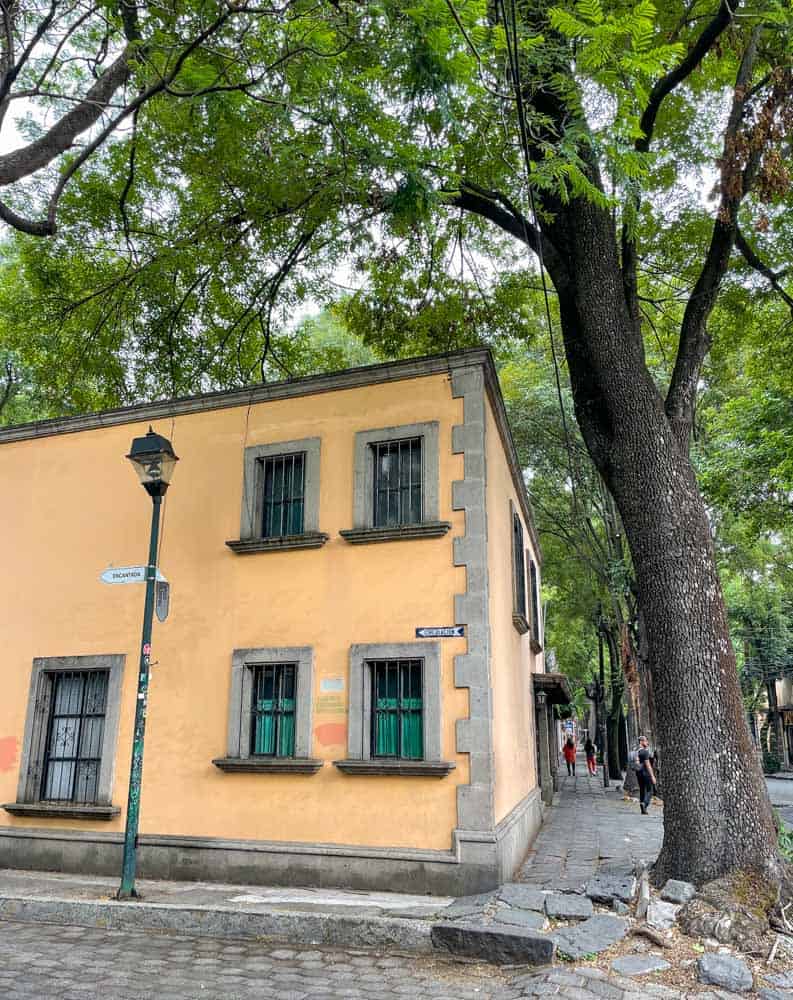
Any mention of Coyoacan is synonymous with the Frida Kahlo museum, but when you arrive in this charming old-fashioned district, you will realize that her house is just the tip of the iceberg in terms of what this area has to offer.
Centuries ago, Coyoacan was once its own independent city. However, the urban expansion of CDMX has seen the borders of the Mexican capital expand and expand until they have engulfed Coyoacan in their grasp.
It was the Tepanec people that first founded Coyoacan way back in the 12th century and in 1521, the Spanish conquistador Hernán Cortés declared it as being the capital of “New Spain”. Over the last few centuries, Coyoacan has become the beloved neighborhood of choice for many famous writers, creatives, and artists.
Essentially, Coyoacan is to Mexico City as what Greenwich Village is to New York. Its cobblestone streets twist and turn to reveal quaint, ramshackle coffee shops, independent art galleries, and artisanal stores.
Browse for street food eats, gifts and crafts at the Mercado de Coyoacan, grab a coffee at El Jarocho, one of the oldest cafes in the area, and take the time to check out and admire the various old churches and plazas.
Plaza de la Conchita is particularly pretty and is locally famous because it was here where Hernán Cortés lived for years. The sunbleached yellow Catholic church, with its papel picado decorations fluttering in the wind, is a nice place to take photos.
Walk down Avocado Alley
Avocado Alley (Callejon del Aguacate) is an eerie yet interesting place to stop by on the outskirts of Coyoacan and Santa Catarina, particularly if you are interested in the macabre.
The winding, narrow 17th-century passageway is only 4 meters in length. Its old stone walls are overgrown with bougainvillea, vines, and flowers, and there is an eerie sort of silence as you make your way down it.
Many local residents have claimed to see ghostly apparitions along the Callejon de Aguacate, including, most notably, that of a small boy. According to local legend, the boy was killed here centuries ago after pestering a local soldier for attention, and the soldier, tired of the boy’s antics, struck him on the head with his baton.
Today, you will find a small shrine in the center of the alley with a statue of the Virgin Mary. Many people come to place small toys, collectible cards, and trinkets here to appease the spirit of the child ghost.
Go for dinner in Roma Norte
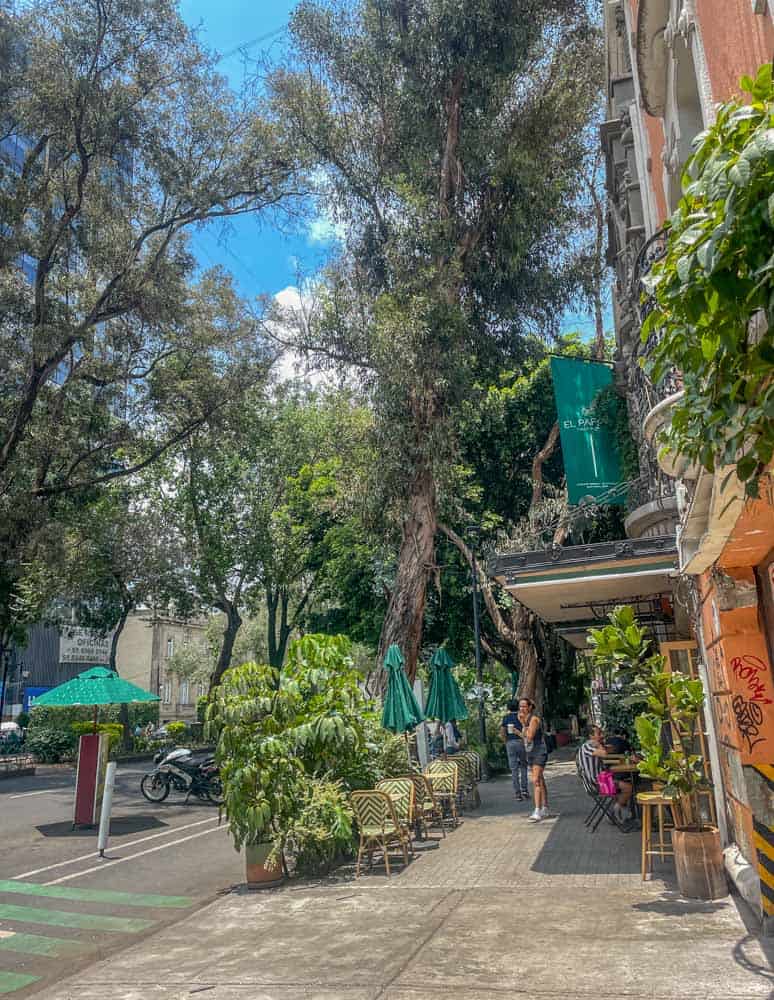
Colonia Roma (consisting of Roma Norte and Roma Sur) and the neighboring area of La Condesa are among the most up-and-coming hipster districts in Mexico City today.
Over the last couple of years, these areas have become very popular with digital nomads and expats in Mexico City and are known for their diverse selection of restaurants, speakeasy bars, and craft breweries.
If you want to be somewhere safe and central, this is one of the best areas to stay during your time in Mexico City.
The district, located just south of the Paseo de la Reforma, was made famous by the award-winning 2018 movie “Roma,” and its beautiful streets are characterized by their Porfirian art deco and colonial revival style architecture.
Part of the joy of visiting Roma Norte is found in simply taking the time to get lost among its various streets and passageways, and admiring the street art and the architecture as you go. Take a little time to explore the area on foot before heading for dinner at Restaurante Rosetta. (Colima 166).
In a district full of excellent restaurants, Restaurante Rosetta stands out above the crowd. The eatery is set inside a lovingly restored old mansion whose courtyard serves as a dining room.
The space is filled with gorgeous plants and antique furnishings, and the ambiance is unparalleled. Rosetta’s menu focuses on traditional Mexican dishes prepared with a contemporary twist and the offering changes throughout the year depending on what ingredients are in season.
Evening drinks in Roma Norte
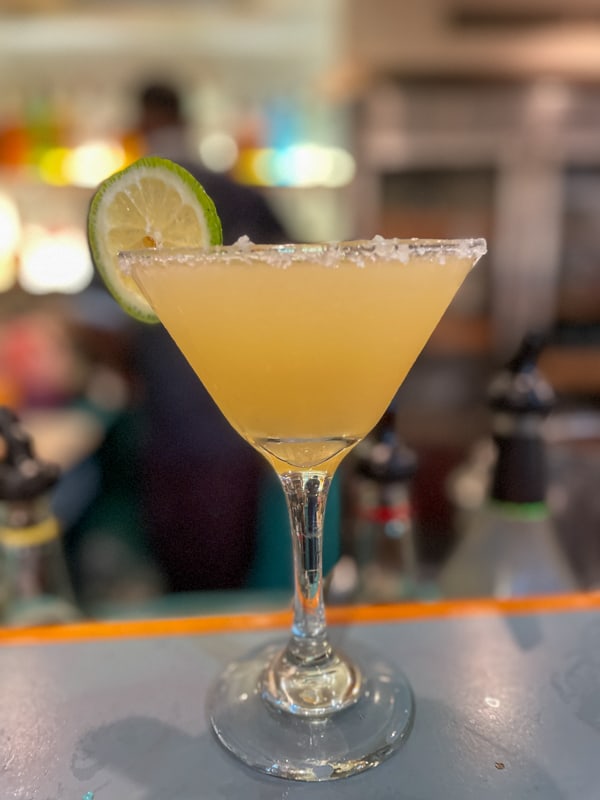
After dinner, round your day off with a nightcap at one of the many charming cocktail bars in Roma Norte. Gin Álvaro Obregón (Córdoba 107, Roma Nte., Cuauhtémoc) is a fun spot with eclectic decor, al fresco seating, and (as the name suggests) a menu that specializes in gin cocktails.
The bar often plays host to live DJs later in the evenings, and if you are not already enamored by any of the gin-infused cocktails on the menu, their expert mixologists will create a bespoke one, especially for you. Bar Oriente (Calle de Durango 181) is another fun spot, whose decor and cocktail menu are inspired by Japanese culture and the Far East.
Final thoughts: One day in Mexico City
One day in Mexico City is enough to get an initial feel for the Mexican capital, but it isn’t nearly enough time to experience everything that this vibrant city has to offer. The above itinerary might seem jam-packed but it leaves so many wonderful attractions (that are truly a shame to miss out on), on the table.
If your schedule is flexible enough that you can maybe add one or two more days to your time in CDMX, you might be interested in this 4-5 day Mexico City itinerary.
With more time, you can experience the Palacio de Bellas Artes (Palace of fine arts) and the historic centre of CDMX, the Xochimilco canals and the nearby ancient Aztec city of Teotihuacan.
Author Bio
Melissa Douglas is a British Travel Writer based in Mexico. She has contributed to numerous high profile travel publications across the globe and runs the website www.mexicotravelsecrets.com where she encourages travelers to explore Mexico off the beaten path.
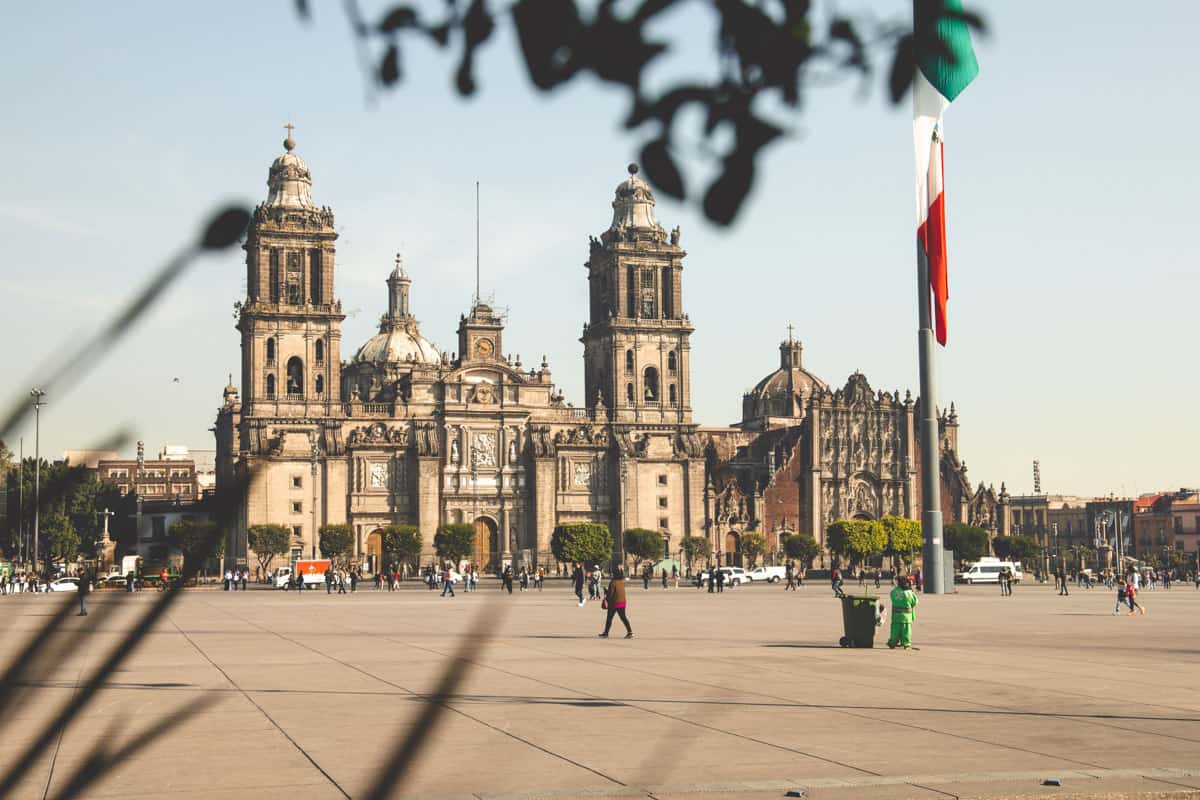
FAQ: Things to see in Mexico City in One Day
How can I spend a day in Mexico City?
Start with breakfast in Polanco, visit the National Museum of Anthropology, stroll through Chapultepec Park, explore the Frida Kahlo House Museum, wander around Coyoacán, and end your day with dinner and drinks in Roma Norte.
How to spend 24 hours in Mexico City?
Maximize your 24 hours by exploring diverse neighborhoods, visiting key cultural sites, enjoying local cuisine, and experiencing the city’s vibrant nightlife.
How far are the pyramids from Mexico City?
The ancient pyramids of Teotihuacan are approximately 50 kilometers (about 31 miles) northeast of Mexico City, roughly a one-hour drive.
Can I walk in Mexico City?
Yes, you can walk in Mexico City; many neighborhoods like Polanco, Coyoacán, and Roma Norte are pedestrian-friendly and offer a true sense of the city’s culture and atmosphere.
Can you walk in Mexico City at night?
Walking in Mexico City at night is possible, especially in safer, well-lit areas like Roma Norte and Polanco, but it’s always advisable to stay aware of your surroundings.
Can I leave Mexico City airport during a layover?
Yes, you can leave Mexico City airport during a layover, but ensure you have enough time to return and clear security before your next flight.
Is a 5-hour layover enough time to leave the airport?
A 5-hour layover might be just enough to briefly leave the airport, but it’s risky due to traffic and security lines; it’s better suited for relaxing at the airport.
What is one challenge for Mexico City?
One challenge for Mexico City is managing its heavy traffic congestion, which can impact travel times within the city.
What is the best way to get around Mexico City?
The best way to get around Mexico City is a combination of walking (in pedestrian-friendly areas), using the efficient metro system, and taking taxis or rideshare services for longer distances.
Planning a trip to Mexico? Check out these posts!
- Learn How to Sail on Vacation in Mexico’s Sea of Cortez
- 13 Best Guanajuato State Tours Immersed in Nature
- How to Visit Islas Marias Mexico
- 15 Cheap Places To Live in Mexico on the Beach
- 11 Best Party Cities in Mexico
- Best Snorkeling in Mexico: 15 Amazing Places
- Guanajuato State Road Trip Itinerary For the Adventurous
- Living In Oaxaca City as a Digital Nomad
- Ecotourism in Mexico: 9 Sustainable Tours You’ll Love
